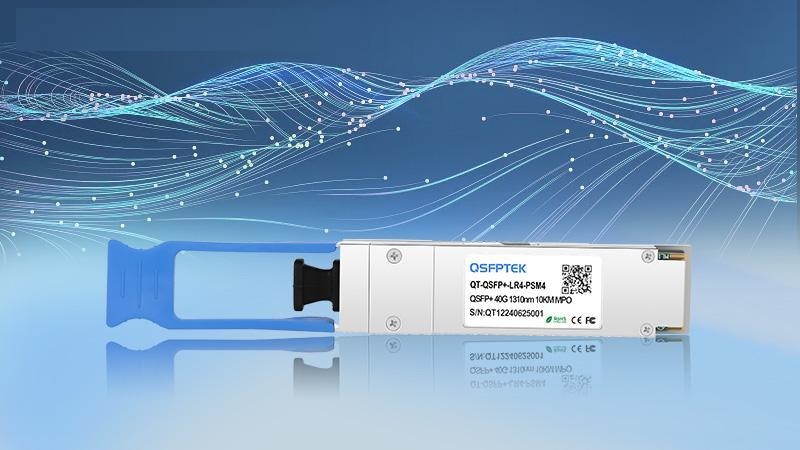Introduction
In today’s fast-paced digital world, the demand for faster and more reliable data transmission is growing rapidly. One technology that has significantly impacted network performance is the 40G optical module, which enables high-speed data transfer within networks. These modules have become increasingly important in environments like data centers and enterprise networks, where large volumes of data need to be processed efficiently. As businesses continue to expand their digital infrastructure, the transition to 40G networks has become a key step in improving connectivity and supporting more intensive workloads.
Types of 40G Optical Modules
40G optical modules come in several types, the most common being QSFP+ and CFP. QSFP+ (Quad Small Form-Factor Pluggable Plus) is widely used due to its compact size and efficiency, while CFP (C Form-Factor Pluggable) modules are often preferred for their support of longer-distance transmission. Each form factor is designed to serve different networking needs, whether it be higher density connections in data centers or more extended reach for enterprise networks. Understanding the differences between these form factors helps in choosing the right module for specific applications.
Technical Specifications of 40G Optical Modules
The technical specifications of 40G optical modules play a critical role in determining their performance. These modules operate at a data rate of 40 gigabits per second (Gbps), and they typically feature low power consumption, which is essential for maintaining energy-efficient data centers. The wavelength of the optical signals used by these modules varies depending on whether they are designed for single-mode or multimode fiber. Single-mode fiber is usually utilized for long-distance transmission, while multimode fiber is ideal for shorter-range connections, making the selection of the fiber type equally important in designing network solutions.
Transmission Distance and Bandwidth
The performance of 40G optical modules is also defined by their transmission distance and bandwidth capabilities. For instance, short-range (SR4) modules are optimized for distances of up to 150 meters over multimode fiber, while long-range (LR4) modules can cover distances of up to 10 kilometers over single-mode fiber. This difference in range allows for flexibility when deploying 40G networks, depending on the specific requirements of a given environment. Data centers that rely on short, high-density connections can benefit from QSFP+ SR4 modules, while those that require long-distance communication between buildings or across campuses may prefer QSFP+ LR4 modules.
Advantages and Limitations of 40G Optical Modules
There are many advantages to using 40G optical modules, such as their ability to support high-speed data transfers, increased compatibility with existing infrastructure, and relatively lower costs compared to more advanced solutions like 100G modules. However, they do have limitations, including distance restrictions for certain module types and potentially higher power consumption in large-scale deployments. Despite these challenges, 40G modules remain a reliable option for organizations seeking to enhance their network performance without making the leap to 100G technology just yet.
Applications of 40G Optical Modules
Applications for 40G optical modules are vast, with data centers being a primary use case. These modules support high-performance computing, cloud services, and other data-intensive applications that require quick, reliable communication between servers. They are also used in enterprise networks to improve connectivity between different branches or offices, making them a versatile tool for businesses of all sizes. As the demand for bandwidth continues to grow, 40G optical modules will remain an essential component of modern networking infrastructure.
Keep an eye for more news & updates on BuzzsLash!




